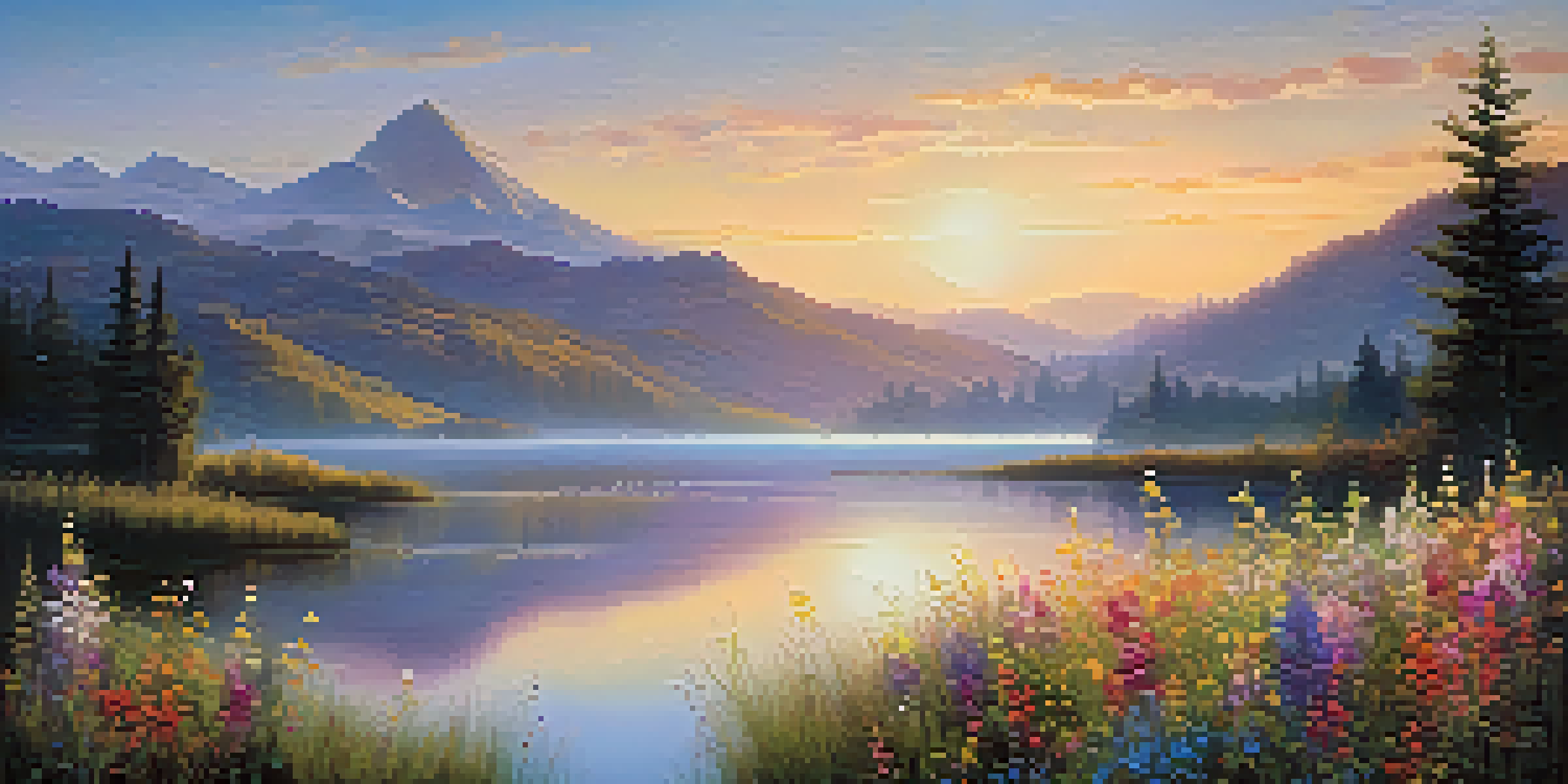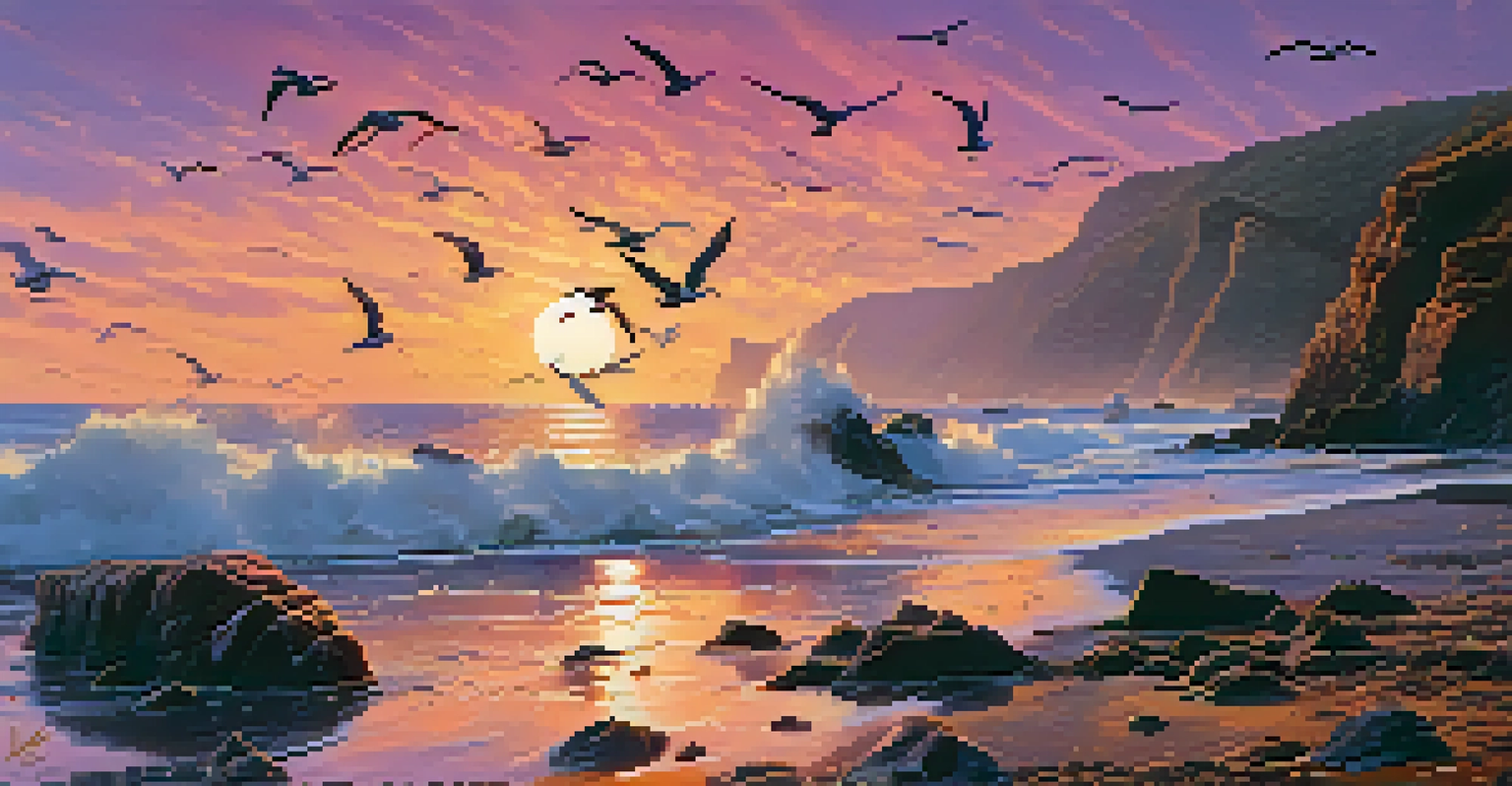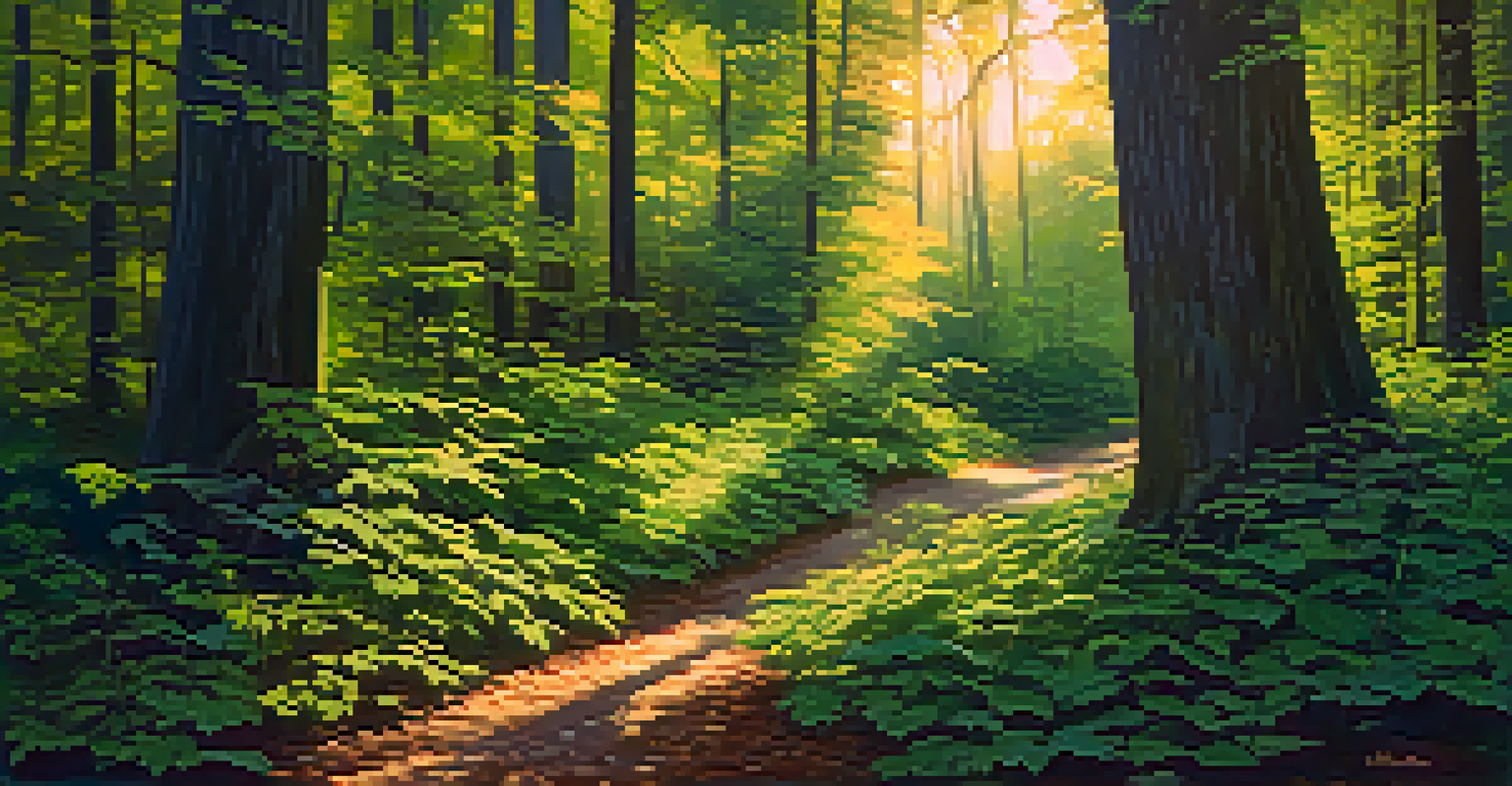How to Capture Stunning Landscapes: Techniques and Tips

Understanding the Basics of Landscape Photography
Before diving into the art of landscape photography, it's crucial to grasp the fundamentals. This includes understanding your camera settings, such as aperture, shutter speed, and ISO. These elements play a significant role in how your final image will look.
Landscape photography is the supreme test of the photographer - and often the supreme disappointment.
For instance, using a smaller aperture (larger f-number) can achieve greater depth of field, keeping more of your scene in focus. This is particularly useful for landscapes where you want both the foreground and background to shine. Remember, practice makes perfect, so experiment with different settings to see what works best for you.
Additionally, familiarize yourself with the composition techniques that can elevate your photos. The rule of thirds, leading lines, and framing are all valuable tools to help guide the viewer's eye through your beautiful landscape.
Choosing the Right Location for Captivating Landscapes
Finding the perfect spot to capture stunning landscapes is half the battle. Researching locations in advance can help you uncover hidden gems that might not be on everyone’s radar. Websites like Instagram and photography forums can offer inspiration and insights into popular and lesser-known locations.

Consider visiting during different times of the day or year to witness how the light changes the scene. For example, sunrise and sunset provide soft, golden light that can make your landscapes look magical. Also, don't hesitate to explore local parks or trails; sometimes, the best views are right in your backyard.
Master Camera Settings for Landscapes
Understanding your camera's aperture, shutter speed, and ISO is crucial for capturing stunning landscape photos.
Lastly, be aware of the weather conditions, as they can dramatically affect your photographs. A cloudy day may provide soft, diffused light, while a clear blue sky can add vibrancy to your images. Always be prepared to adapt your plans based on the elements.
Utilizing Natural Light for Dramatic Effects
Lighting is an essential component in photography and can dramatically influence the mood of your landscape images. The golden hours—shortly after sunrise and before sunset—offer warm tones and long shadows that add depth and dimension to your photos. This is often referred to as 'magic hour' for a good reason.
In every landscape, there is a story to tell. The challenge is to find it and share it with the world.
In contrast, midday sun can produce harsh shadows and overly bright areas, which might not be ideal for landscape photography. If you find yourself shooting during this time, look for opportunities to use shadows creatively or focus on areas that are shaded.
Don't forget about overcast days, either! Soft, diffused light can create a serene atmosphere and reveal beautiful colors that may be washed out in bright sunlight. Embrace the variety of lighting conditions and let them inspire your compositions.
Framing Your Landscape for Maximum Impact
Framing is a powerful technique that can help draw attention to your main subject. Using elements in the foreground, like trees, rocks, or pathways, can create a sense of depth and lead the viewer's eye into the scene. Think of it as setting the stage for your landscape.
Additionally, consider the horizon line in your composition. Placing the horizon low allows you to emphasize the sky, while a high horizon showcases the land. Experimenting with different placements can lead to striking results.
Utilize Natural Light Effectively
The right lighting, especially during golden hours, can dramatically enhance the mood and depth of your landscape images.
Lastly, don’t be afraid to include people or wildlife in your landscapes. They can serve as a scale reference and add a human element that connects viewers with the scene, making your photos more relatable and engaging.
Incorporating Foreground Elements for Depth
Including foreground elements in your landscape photos can add layers and depth, making your images more engaging. By placing an interesting object, like a flower or rock, in the foreground, you create a pathway for the viewer’s eye to travel through the image.
This technique can also help establish a sense of scale, giving your landscape context. For instance, a close-up of a wildflower in the foreground with a mountain range in the background can make the scene feel more immersive and expansive.
It’s essential to pay attention to the sharpness and focus of these foreground elements. A well-focussed foreground paired with a softly blurred background can create a beautiful bokeh effect, making your landscape feel three-dimensional.
Post-Processing Techniques to Enhance Your Photos
Once you've captured your stunning landscapes, the work doesn't stop there! Post-processing is an essential step that allows you to refine your images and bring out the best in them. Software like Adobe Lightroom and Photoshop can help adjust exposure, contrast, and saturation to make your landscapes pop.
Consider using filters during editing to enhance the colors and details in the sky or foreground. For instance, a graduated filter can help balance the brightness between the sky and land, preventing blown-out highlights and ensuring every detail is visible.
Incorporate Foreground Elements
Adding interesting foreground elements can create depth and context, making your landscape photos more engaging.
Lastly, don't forget to crop your images as needed. A well-composed photo might need a little adjustment to ensure the focus is where it should be. Remember, the goal is to maintain the natural beauty of the landscape while enhancing its appeal.
Practicing Patience and Being Present in Nature
One of the most crucial aspects of capturing stunning landscapes is patience. Nature is unpredictable, and sometimes you may need to wait for the perfect moment to snap that ideal shot. Whether it’s waiting for the clouds to part or for the right light to hit, embracing this waiting time can lead to breathtaking results.
Being present in nature can also heighten your awareness, allowing you to notice details that might otherwise go unnoticed. Take a moment to breathe in the surroundings, listen to the sounds, and observe the light as it plays across the landscape. This mindfulness can help inspire your compositions.

Finally, don’t rush the process. Each landscape is unique, and taking your time to explore can lead to surprising discoveries. Whether it’s a new angle or an unexpected detail, the beauty of landscape photography lies in the journey as much as the destination.